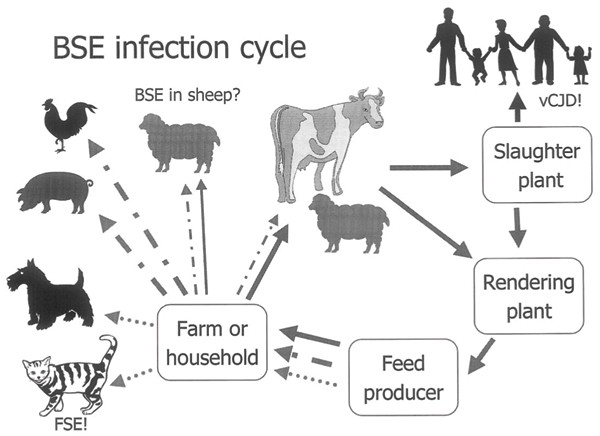Translation in prokaryotes
The three basic stages of protein synthesis are initiation,
elongation, termination. These process is almost similar in prokaryotes and
eukaryotes.
Initiation in
prokaryotes
This involves mRNA molecule, a ribosome, a specific
initiator tRNA, Initiation factors(proteins) GTP and magnesium ions.
Steps involved:
- · Binding of 30Ssmall ribosomal unit to the region of the mRNA with AUG initiation codon.
Actually it binds to a sequence upstream of AUG which is
known as Ribosome binding site(RBS).Most
of RBS are 8 to 12 nucleotides upstream from initiation codon. This is a purine rich region almost similar to
AGGAG and complementary to a pyrimidine rich region (UCCUCC) at 3’ end of
16SrRNA. RBS was evident from work of
John Shine and Lynn Dalgarno. So this
region is also known as Shine- Dalgarno
sequence. Mutation occur to Shine- Dalgarno sequence or sequence
complementary to it, mRNA translation will be abolished.
·
The ribosomal subunit comes to the mRNA bound to
three initiation factors ( IF1, IF2, IF3)
and to a molecule of GTP and magnesium ions.
·
The next step is the binding of the initiator
tRNA to the AUG start codon to which the 30S subunit is bound.
In both prokaryotes and eukaryotes, the AUG initiator codon
is methionine.
·
In prokaryotes, initiator methionine is modified
to form formylmethionine(fMet) by adding formyl group to methionine amino group.
·
fMet attached to special initiator tRNA (tRNA. fMet)
and bought to ribosome which as anticodon attached to AUG start codon.
tRNA (tRNA. fMet)is special ,because it involved
specifically with the initiation process of protein synthesis.
Aminoacylation of
tRNA. fMet is as follows:
Methyionyl-tRNA
synthetase catalyzes the addition of methionine to the tRNA.
Enzyme transformylase adds the formyl group to the methionine.
Thus the molecule is designated as fMet- tRNA. fMet.
·
fMet- tRNA
binds to the start codon of 30S –mRNA complex and IF3 is released and
forms 30S initiation complex.
·
30S initiation complex consist of mRNA, 30S
subunit, fMet- tRNA ,IF1 & IF2
70S ribosomes has 3 binding sites for aminoacyl tRNA:
1. Exit(E)
2. Peptidyl (P)
3. Aminoacyl(A)
·
fMet- tRNA
is bound to the mRNA in the P
site to form 70 S initiation complex where
as E and A sites are vacant.
Elongation in
prokaryotes
In prokaryotes, addition of amino acids to growing
polypeptide chain one by one.This phase as 3 steps :
Aminoacyl-tRNA binds to the ribosome
The peptide bond forms
The ribosome moves along the mRNA
one codon at a time(Translocation).
Binding of Aminoacyl-tRNA
At the start of elongation, the anticodon of fMet- tRNA is hydrogen bonded to the AUG initiation
codon in P site of ribosome.
Next, the appropriate aminoacyl-tRNA binds to the codon in
the A site.
Aminoacyl-tRNA which
is bound to protein elongation factor EF-Tu
and a molecule GTP is bought to ribosome.
When aminoacyl-tRNA binds to codon A,GTP hydrolysis releases EF-Tu -GDP. Then second elongation factor EF-Ts,
binds to EF-Tu and displaces GDP.
Next, GDP binds to EF-Tu - EF-Ts complex to produce EF-Tu
–GDP complex simultaneously release of EF-Ts.
An aminoacyl-tRNA binds to the
EF-Tu –GDP and that complex can bind to the A site in the ribosome.
Peptide bond formation
There are 2 steps involved in
peptide formation.
·
First bond between the amino acid and the tRNA
in the P site is cleaved.
·
Second, the peptide bond is formed between by peptidyl transferase.
·
Once peptide bond has formed ,a tRNA without an
attached amino acid is left in the P site.
·
The tRNA in the A site (peptidyl-tRNA )has the first 2 amino acids of the polypeptide
chain attached to it.
Peptidyl transferase activity was
inhibited by antibiotics such as chloramphenicol, carbomycin.
Translocation
Ribosome moves along the mRNA towards the 3’end.In
prokaryotes ,translocation requires the activity of protein elongation factor
EF-G.
An EF-G-GTP complex binds to the
ribosome , GTP is hydrolyzed and translocation of the ribosome occurs along with displacement of the
uncharged tRNA away from the P site.
GTP hydrolysis changes the
structure of EF-G, which facilitates the translocation event.
50Ssubunit site called E is
involved in the release of the uncharged tRNA from E.coli ribosome.
The uncharged tRNA moves from the
P site and then binds to the E site, effectively blocking the next aminoacyl
tRNA from biinding to the A site until translocation is complete and the
peptidyl-tRNA is bound correctly in the P site.
After translocation ,the EF-G is
released
After translocation is complete ,A
site is vacant.An amino acyl tRNA with the correct anticodon binds to the newly
exposed codon in the A site.
The whole process is repeated
until translation terminate at a stop
codon.
Termination in
prokaryotes
Termination of translation is signaled by any of stop codons
UAG, UAA, UGA. The stop codons do not code for amino acids, so no tRNA s in the
cell have anticodons
The ribosome recognizes a stop codon with the help of
proteins called termination factors or release factors which read the codons and initiate a series of specific termination events.
E.coli has 3 RFs
(RF1,RF2,RF3) and each is a polypeptide. Factor RF1recognizes UAA and UAG.
Factor RF2 recognizes
UAA and UGA. Factor RF3 does not recognize any stop codons but stimulates
termination events.
Main events are:
Release of the polypeptide from the tRNA in the P site of
the ribosome in a reaction catalyzed by
peptidyl transferase
Release of tRNA from ribosome
Dissociation of the two ribosomal subunits and the RF from
mRNA
The initiating amino acid
usually cleaved from the completed polypeptide.


Comments
Post a Comment